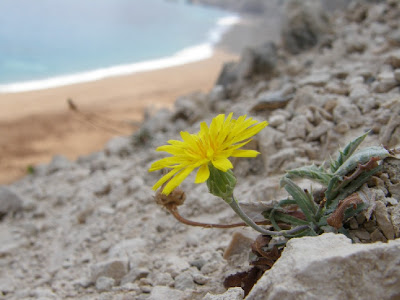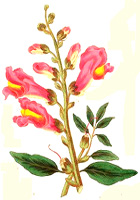
Hi all, back and out of the doldrums. Hopefully you've all been overly productive both in your offline & online gardens. I'm about to recompensate my absenteeism but first I've got to share this effusion of sentiments and pixels from my latest Homeric crusade... (raised eyebrows and grumbling welcome as usual !)


Even though I have only just returned, the sentimental lust is forever blooming. I will let you enjoy some idyllic Mediterranean landscapes and many of the easily missed and often unappreciated plants which have illuminated my wanderings and followed me as I left some more footprints on this marvelous island. 'Cos there truly is more to this delusively barren land than just my 'engaging' balderdash...
 Old, charming villages dotted with bougainvilleas, rose laurels and century old olive trees ...
Old, charming villages dotted with bougainvilleas, rose laurels and century old olive trees ...


Under the Mediterranean Sun
 "The half-forgotten island of Kefalonia rises improvidently and inadvisedly from the Ionian Sea; it is an island so immense in antiquity that the very rocks exhale nostalgia and the red earth lies stupified not only by the sun, but by the impossible weight of memory… The dark green of the pines is unfathomably and retreatingly deep, the ocean viewed from the top of a cliff presents azure and turquoise, emerald, viridian and lapis lazuli. Even the seawater is easier to see through than the air of any other place; a man may float in the water watching the distant sea bed, and clearly see the lugubrious rays accompanied by diminutive flatfish."
"The half-forgotten island of Kefalonia rises improvidently and inadvisedly from the Ionian Sea; it is an island so immense in antiquity that the very rocks exhale nostalgia and the red earth lies stupified not only by the sun, but by the impossible weight of memory… The dark green of the pines is unfathomably and retreatingly deep, the ocean viewed from the top of a cliff presents azure and turquoise, emerald, viridian and lapis lazuli. Even the seawater is easier to see through than the air of any other place; a man may float in the water watching the distant sea bed, and clearly see the lugubrious rays accompanied by diminutive flatfish."

Regrettably (or not), no longer forgotten, but remains as overwhelming and intoxicating as ever.
As far as tourism goes, Kefalonians should consider naming Mr De Bernieres their other patron saint. For it was his book ' Captain Corelli's mandolin ' and then there's the year 2002 with the homonymous film which definitely introduced the magic and beauty of the place to a huge audience and widened the horizons of many more nature lovers and adventurers.
 An island 35 kilometres by 45 kilometres...
An island 35 kilometres by 45 kilometres...Insane but ingenious islanders...
Vibrant colours even during the scorching summer days...
Breathtaking and dramatic scenery...
Venetian ruins, Mycenian tombs, Nymph Caves, Odysseus and Lord Byron's footsteps...
Dreamy, turquoise Ionian sea...
Cypress trees, Umbrella (Italian stone) pines, Greek Firs, Robola grapevine, olive groves, Ainos mountain with many more endemic species...
 Sea Squill ( Urginea maritima )
Sea Squill ( Urginea maritima )Once more the unsettled giant in the bowels of the earth slammed a mighty fist vertically upwards, so that houses leapt from their foundations and solid stone walls rippled like paper in the wind, and suddenly there was a stillness like that of death . The earthquake changed lives so profoundly that to this day it is still the single greatest topic of conversation. Captain Corelli's Mandolin

Beautiful Mediterranean vistas

Kefalonia definitely being a typical example , with vast areas of forest cloaking the rugged limestone landscape and ten peaks exceeding 5,000 feet. Voted 10th in a World Scenic Beauty League, Kefalonia's coast is dotted with hundreds of secluded white limestone coves, caves and steep cliffs. Against the white glow of the coast, many inland areas of the island are blanketed by green plains, Kefalonian fir, olive groves and vineyards.

Mount Ainos, the island's highest mountain(1,628 m), a giant that suddenly emerges from a thick forest of black Greek fir with uniquely upreaching branches that exist only here - Abies cephalonica..





 I can't seem to turn a blind eye on this and usually come to think of myself and friends as magnets for stray animals. There's good and bad just about in every place around the globe, but through the years I have unwillingly created the image about animal abuse on Kefalonia and mind you, I don't even live there, I have never seen hundreds of cats and dogs that get poisoned at the end of the tourist season each year. What I have seen in periods of about three weeks was enough for my stomach. Dogs abandoned in the middle of nowhere, chained to a massive piece of rock, with no food or WATER at all, with summer temperatures scorching the place at around or above 40C each day, with no rain for months. And nothing or no one nearby, just a few stranded tourists per week. Dehydrated puppies dying scattered along deserted dirt tracks...My dear friend who lived there for 9 years also rescued her dog, that she had found hanged on a piece of linen cord. I will stop there. The general conclusion is that some of the locals are too stiff and hardheaded to neuter their pets but they openhandedly tag their furry friends as vermin. Thanks to many local friends and tourists who have fallen in love with the place and have chosen it as their future home, many of the doomed ones have been saved through their animal welfare program.
I can't seem to turn a blind eye on this and usually come to think of myself and friends as magnets for stray animals. There's good and bad just about in every place around the globe, but through the years I have unwillingly created the image about animal abuse on Kefalonia and mind you, I don't even live there, I have never seen hundreds of cats and dogs that get poisoned at the end of the tourist season each year. What I have seen in periods of about three weeks was enough for my stomach. Dogs abandoned in the middle of nowhere, chained to a massive piece of rock, with no food or WATER at all, with summer temperatures scorching the place at around or above 40C each day, with no rain for months. And nothing or no one nearby, just a few stranded tourists per week. Dehydrated puppies dying scattered along deserted dirt tracks...My dear friend who lived there for 9 years also rescued her dog, that she had found hanged on a piece of linen cord. I will stop there. The general conclusion is that some of the locals are too stiff and hardheaded to neuter their pets but they openhandedly tag their furry friends as vermin. Thanks to many local friends and tourists who have fallen in love with the place and have chosen it as their future home, many of the doomed ones have been saved through their animal welfare program.
Unfortunately, the island of Kefalonia is not alone in this. Neither is Greece. Neither is Europe.
The things is, though, that some countries governments are just as cruel as the people in question when it comes to anyone outside their (pardon my French) fat-ass circle of trust.
You sometimes can't help but wonder, does God hear the cries of those who do not communicate in human language? !

Before I spoil my little travelogue, here's a few more to get that frown of your faces...
and nothing does it better than Greek road signs !
I will forever remain a captive of this wonderful isle, even with having to learn that no place is perfect, doing something about it is soul-rewarding and heart-mending to some extent, but doesn't change the world. And just when you thought that people have really lost their marbles, there's papas Efsevios, as modest and benign as ever, Kefalonia's true saint and one of a few good souls to frame down in your memories.

 Having to share your chicken souvlaki with a massive hornet is not the worst thing you may experience. A mild earthquake every now and then (Kefalonia and the neighbouring islands being one of the most seismically active in Europe). Being dragged out to the open water by strong currents and 2m waves, what a thrill. Being cheated and fooled by your rent-a-car rep and getting a lovely car with flat tyres & necrotic gearbox fits in the image as well . Locking-in your keys in that silly car, in the middle of nowhere, makes your day for sure ! LOL Here's a special thanks to a hilarious Italian dude from Rome who helped us wind down Fiat Punto's rear window from the outside and thus saved the day.
Having to share your chicken souvlaki with a massive hornet is not the worst thing you may experience. A mild earthquake every now and then (Kefalonia and the neighbouring islands being one of the most seismically active in Europe). Being dragged out to the open water by strong currents and 2m waves, what a thrill. Being cheated and fooled by your rent-a-car rep and getting a lovely car with flat tyres & necrotic gearbox fits in the image as well . Locking-in your keys in that silly car, in the middle of nowhere, makes your day for sure ! LOL Here's a special thanks to a hilarious Italian dude from Rome who helped us wind down Fiat Punto's rear window from the outside and thus saved the day.
I will get back soon with more photos of the island's lovely flora and a few plant conundrums of my illicitly imported newbies, for my dear gardening friends to help solve.



















































 Top Gardening Sites
Top Gardening Sites

